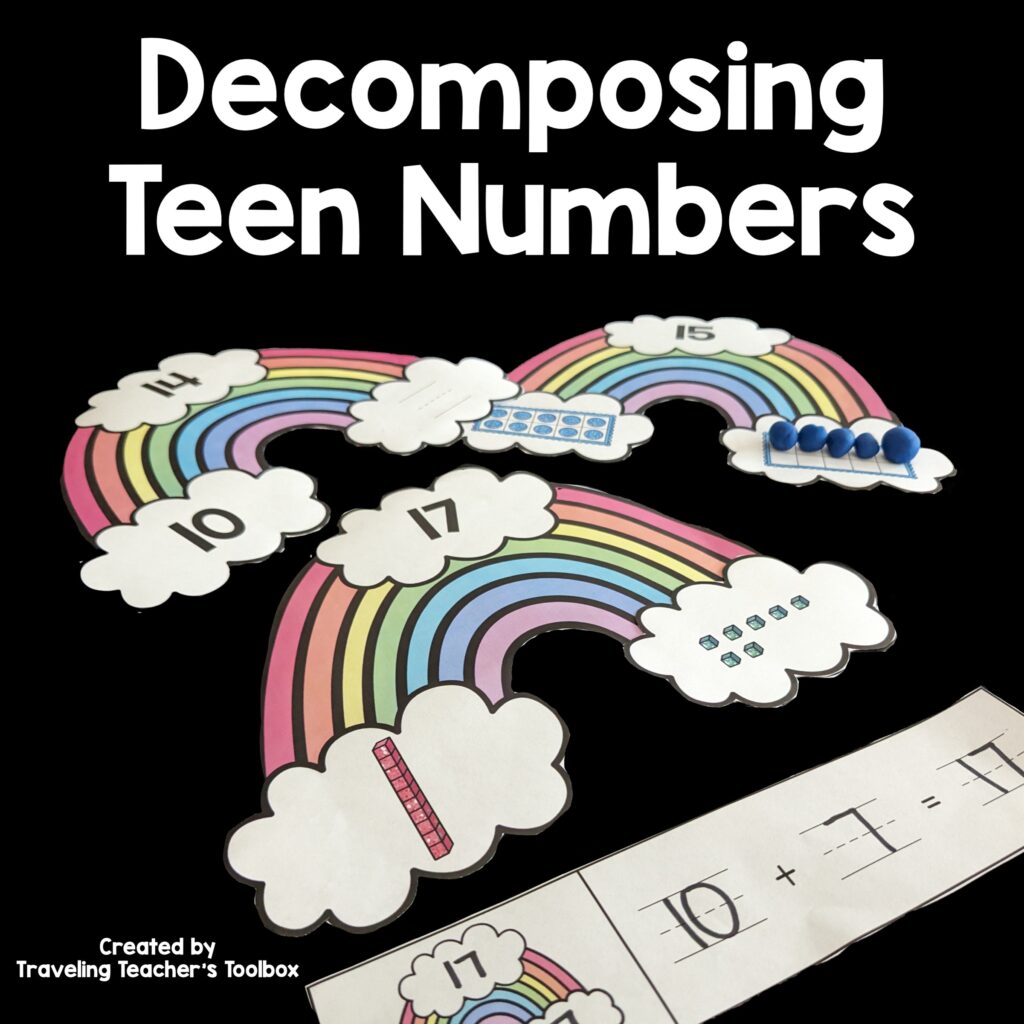Do you need 5 fun activities for teaching decomposing numbers? Number decomposition is an important skill for our students to learn. It helps them to create a strong number sense that will allow them to solve more complex problems, with confidence, as they get older.
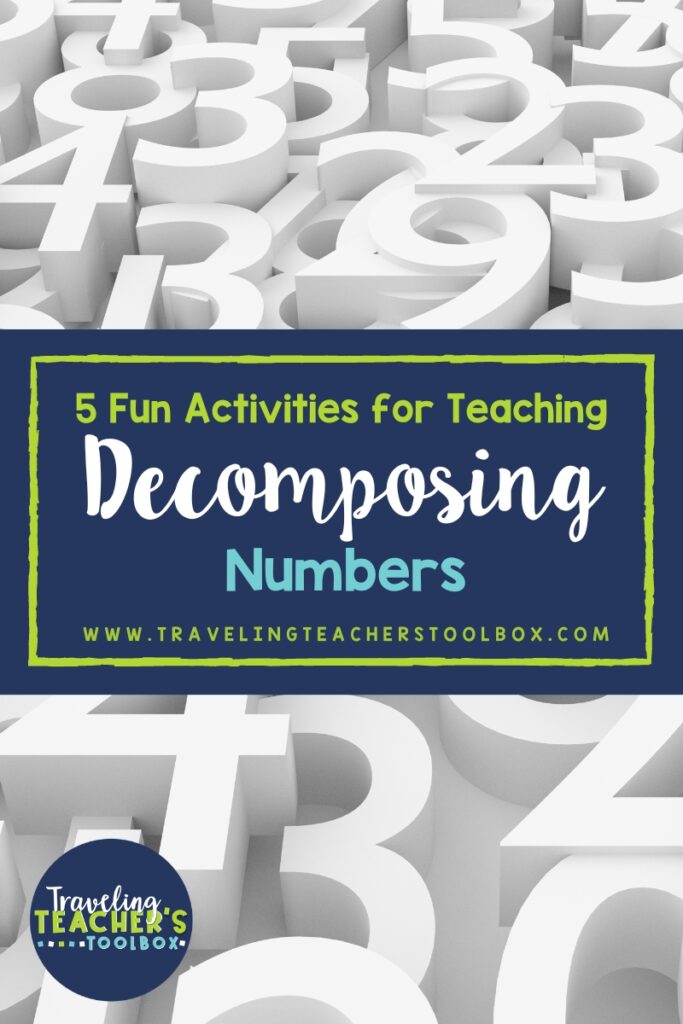
But what does it mean to decompose numbers? (Keep reading until the end to find FREE decomposition mats you can use with your class!)
What is Number Decomposition?
Number decomposition is understanding how numbers can be broken apart.
Here is an example of decomposition to 7:
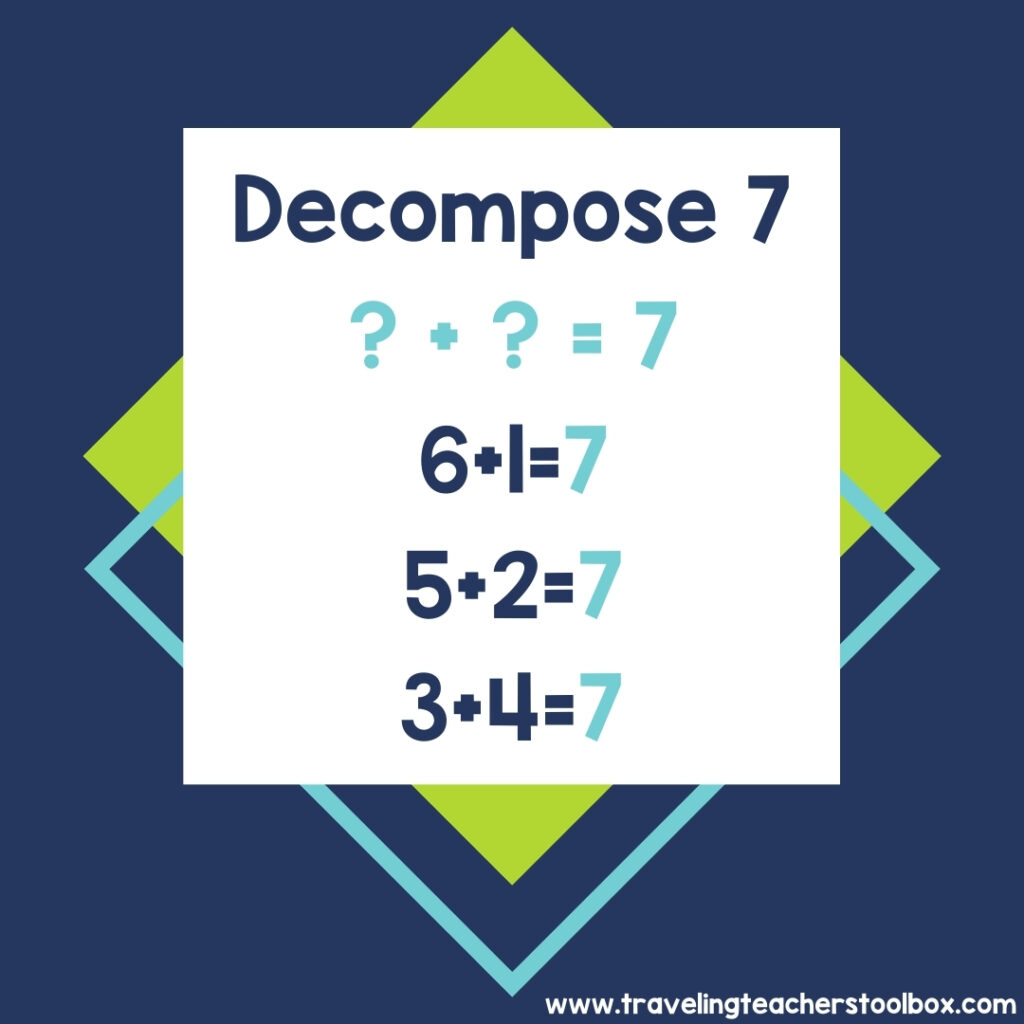
7 can be broken down into 6+1, 5+2, and 3+4.
Understanding what 7 is and how it breaks down can later help students when they are looking at bigger numbers such as 47 or 507. It will give them the tools to think about the relationships between 7 and other numbers.
Here is an example of decomposing the number 11:
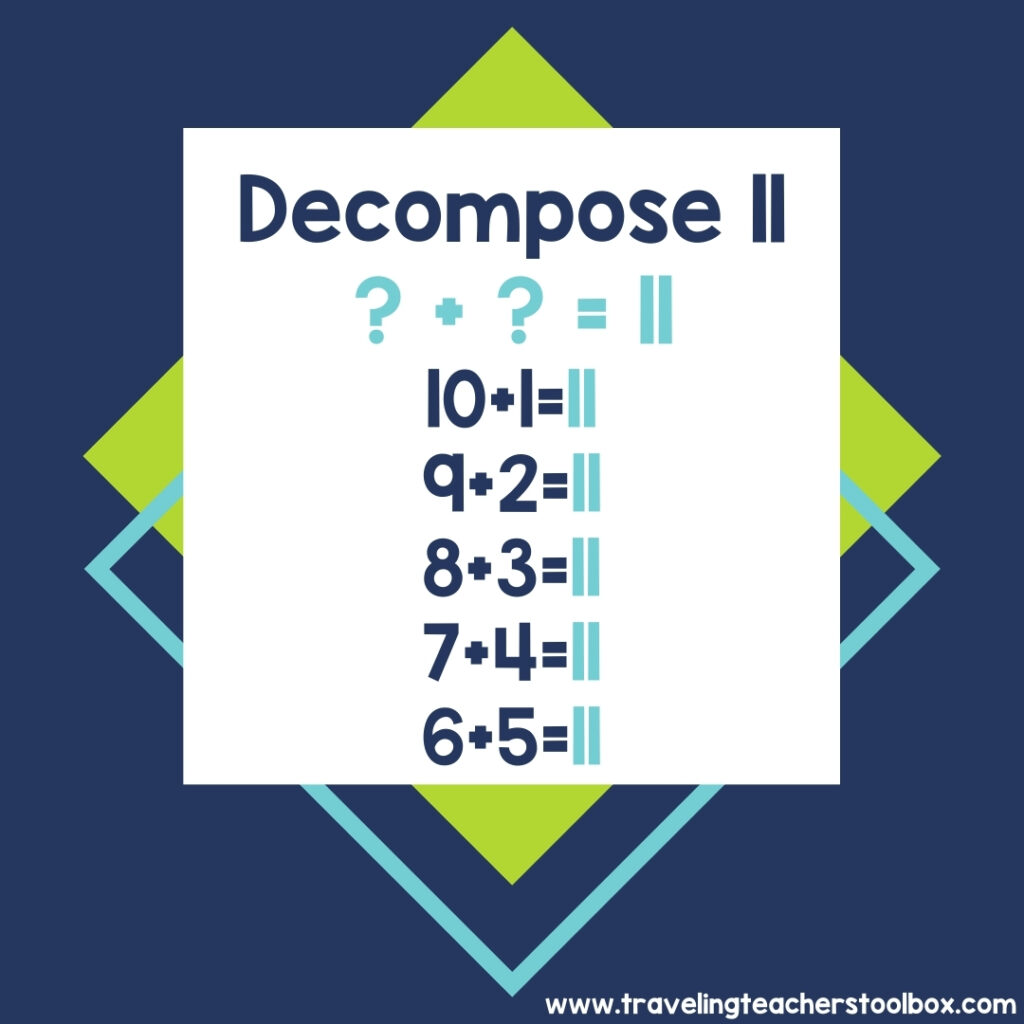
10+1, 9+2, 8+3, 7+4, and 6+5
When students break teen numbers into tens and ones (10+1=11, 10+2=12, 10+3=13…) they understand what those numbers mean. They know that 11 is one ten and one one, 12 is one ten and two ones, and 13 is one ten and 3 ones.
This helps place value develop and adds to a greater understanding of numbers, a.k.a. number sense. It also allows students to think creatively and critically about numbers.
Why is Teaching Number Decomposition Important?
As stated above it helps students develop number sense and have a better understanding of what numbers mean. But it also goes further than that.
Teaching decomposing numbers is important for noticing relationships between numbers. When students understand the relationship between numbers, they can use this information to wrap their minds around problems that are larger and more complex.
Two Ways to Solve a 2-Digit by 2-Digit Problem by Decomposing
Let’s solve 19+29 two ways!
1. First Way to Solve
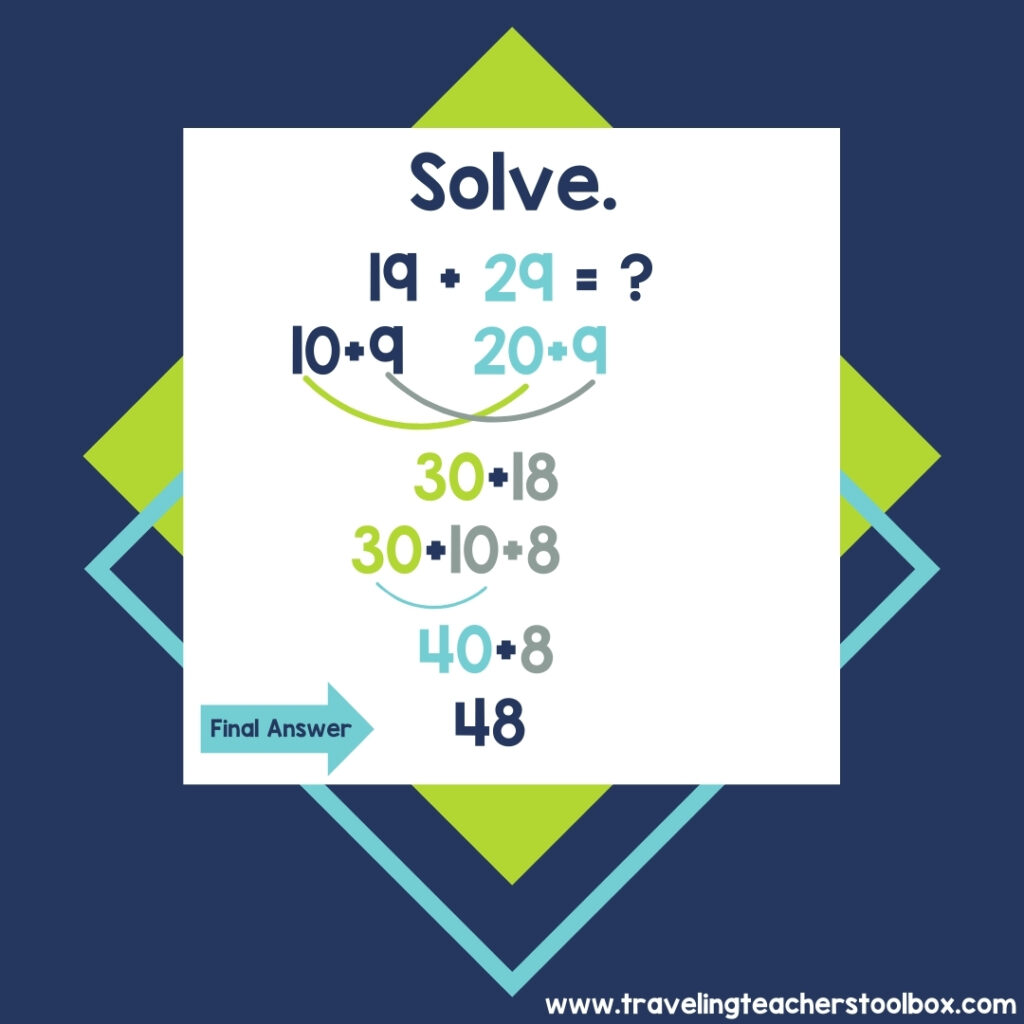
Start by decomposing 19 into 10+9 and 29 into 20+9. Then, add the tens to get 30, and add the ones (two nines) to get 18.
Now, you have 30+18. Next, decompose 18 into 10 and 8.
This gives you 30+10+8. Add the tens first and get 40, then add the ones (8), and your final answer is 48.
2. Second Way to Solve
Understanding how to decompose numbers helps students understand how to look for the relationships between numbers.
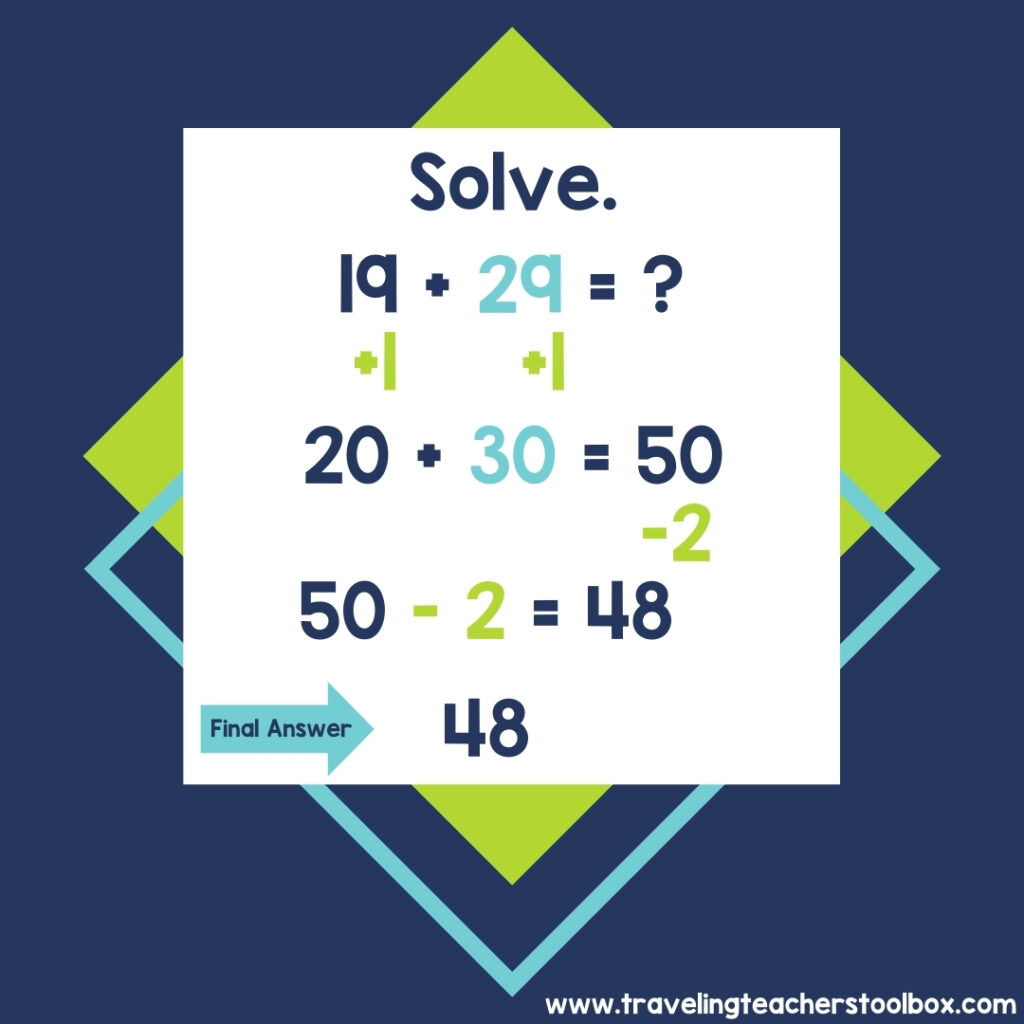
If you know that 20 can be decomposed into 19+1, you can add one to 19 to get to 20.
Then, add one to 29 to balance out the equation. 29+1=30. 30+20=50.
Finally, subtract 2 (which you need to do because you added one to each side) and you get 50-2=48.
Both ways are valid ways for students to solve addition problems through decomposing numbers. But how can you teach this skill? Below are 5 ideas you can use in your classroom!
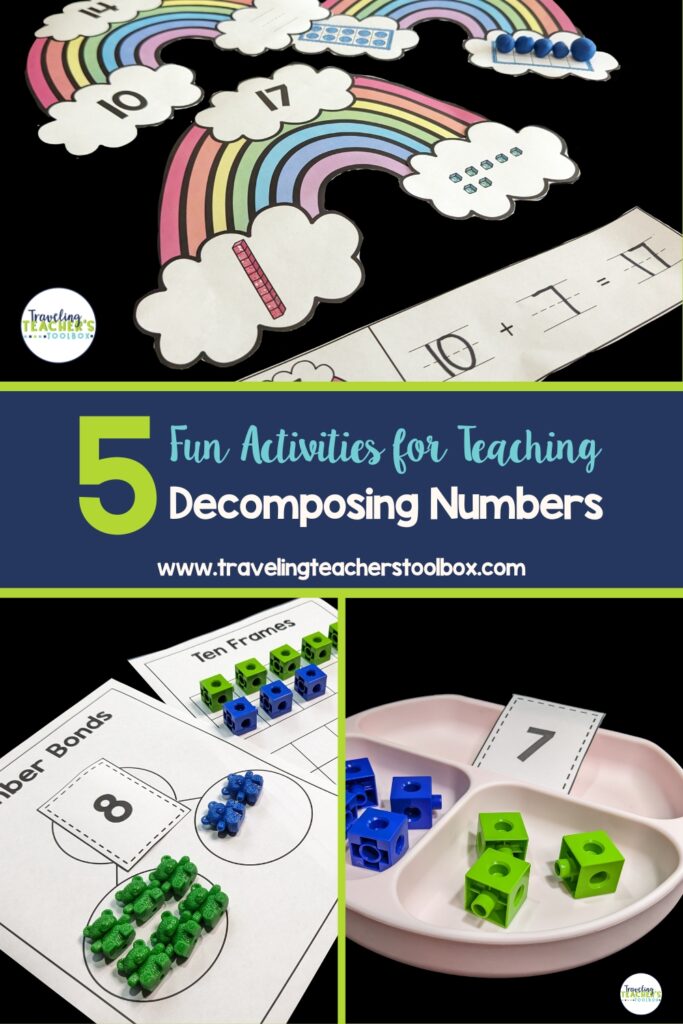
5 Fun Activities for Teaching Decomposing Numbers
1. Use Math Mats
Give each student math counters in 2 different colors. If you are decomposing numbers to 10 give them 10, if you are decomposing teen numbers, give students 20. Then, tell students a number, like 5. Using the two colors, students create as many ways as they can to make 5. Have them record and discuss their answers. Then, give students another number to solve for.
2. Use Math Links for Teaching Decomposing Numbers
If you have math links in your class, give students two colors of math links (10 of each color). Give (or tell) your students a number and then have students make that number using both colors.
Have them record their answer and then see how many other combinations they can create to make that number.
3. Use Plates Divided into 3 Sections
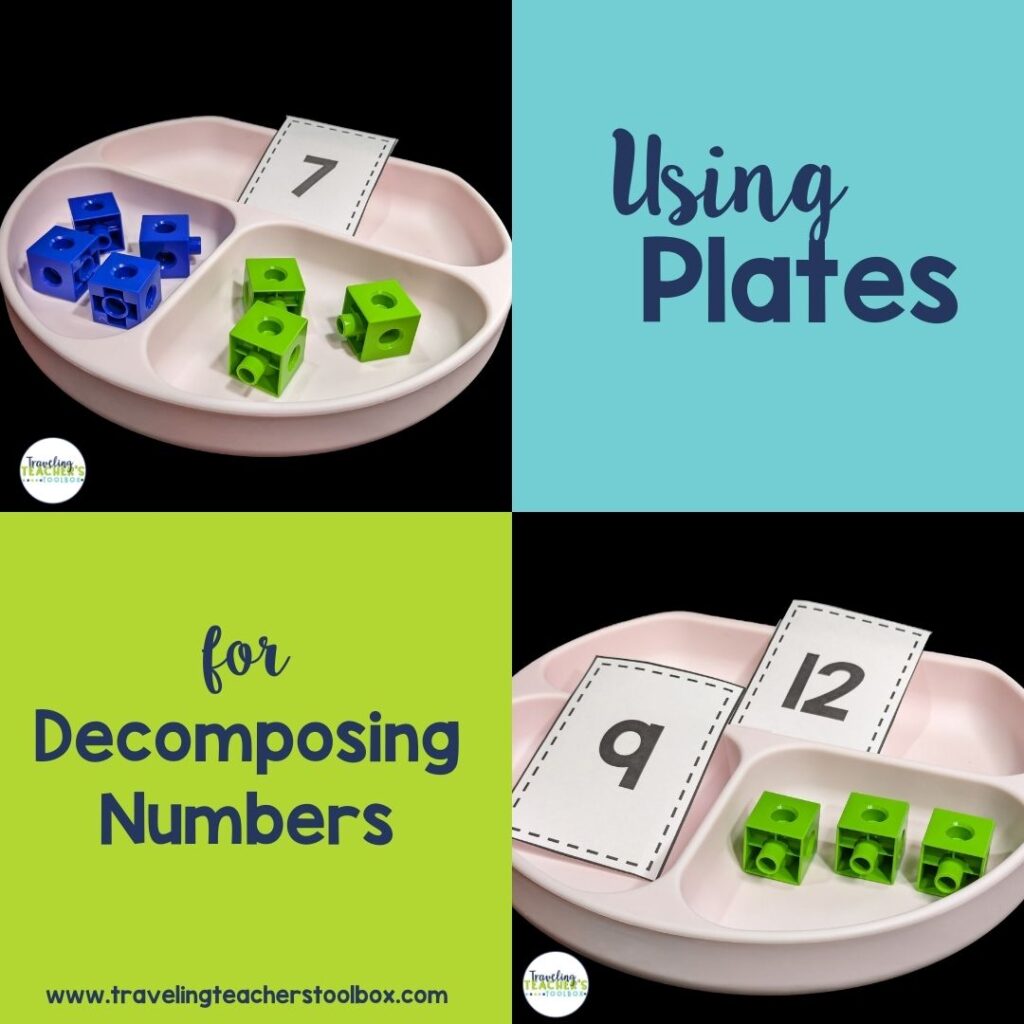
Using plates that are divided into 3’s is another good way to teach this skill. The one in the picture is from my child, but I have seen disposable plates like this at the grocery store. Turn the plate so the bigger section is on top.
Have students draw a card with a number on it (playing cards work well for this, too). Then using two different colors of a manipulative, have students build different ways to make that number.
4. Have Students Move Around
Need to get your students up and moving? Have a group of students stand near the front of the room. Tell them to choose one side of the room to go to. Once students are at different sides of the room, ask them to observe how many people went to each side. Call the students back to the front of the room and split up again in a different way. Ask students for their observations.
5. Hands-On Rainbow Activity and Worksheet
Sometimes you need a fun paper activity or worksheet. Here is an engaging rainbow activity for decomposing numbers that includes worksheets and can be used with a variety of manipulatives, including dough or base ten blocks.
Click on the image to check out this resource!
How do you Teach Decomposing Numbers?
Did you use any of these methods to teach decomposing numbers? I would love to hear about it! Tag me on Instagram @tttoolbox and let me know how it went!
Thanks for stopping by Traveling Teacher’s Toolbox!

